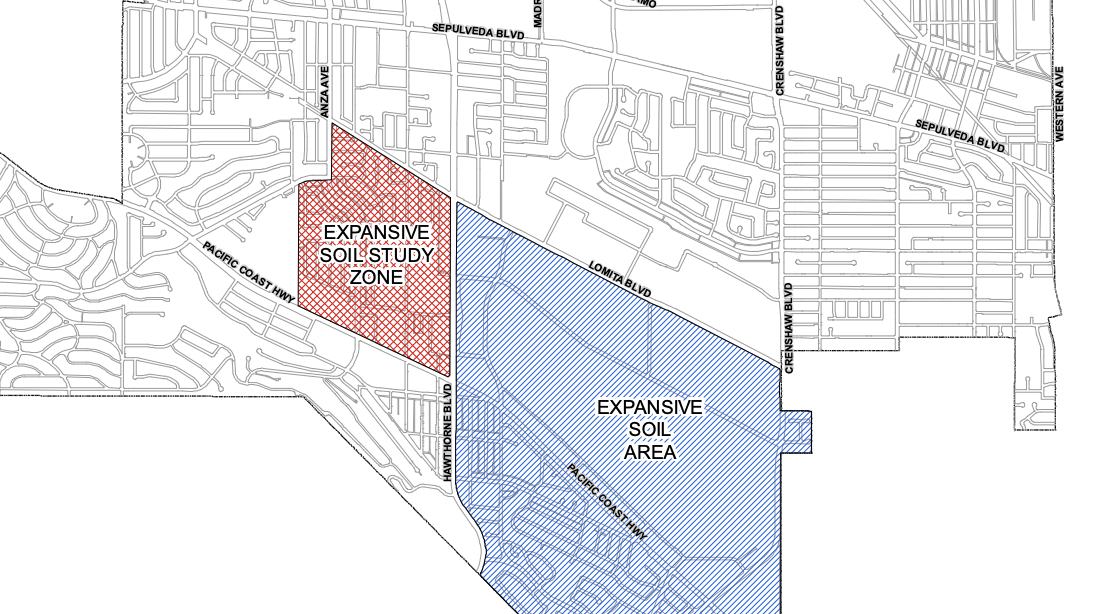Published October 28, 2025
Torrance Expansive Soil: What Homeowners & Buyers Need to Know by Frank Kenny

Torrance Expansive Soil: What Homeowners & Buyers Need to Know by Frank Kenny
Summary: If you’ve heard about the “Expansive Soil Area” of south Torrance—bounded by Lomita Blvd (north), Hawthorne Blvd (east), Pacific Coast Highway (south), and South High School/Anza Ave (west)—you’re not alone. Below is a clear, practical guide to the area’s history, what to watch for, and proven maintenance tips to protect your home’s value.
Torrance Expansive Soil Area: A Brief History
Before south Torrance was developed, much of this area was known as Walteria Lake—low, swampy ground. In the early 1960s, as homes were built, imported adobe fill was used to raise the grade. Adobe is known to expand when wet and contract when dry.
As new owners moved in, some homes experienced movement: foundation stress, wall cracks, and uneven floors. Through the mid-1990s, a “soil area” stigma depressed values relative to surrounding neighborhoods. Over time, new buyers recognized the strong livability, schools, and location—and values normalized with proper maintenance and informed expectations.
Important context: Expansive soils exist throughout the South Bay, but this pocket is well known because the soil was trucked in rather than naturally occurring.
Expert Local Guidance From Frank Kenny
I grew up—and still live—in the soil area. I’ve sold many homes here and regularly advise buyers, sellers, and even other agents on how to evaluate, disclose, and maintain these properties. With first-hand experience and a curated city document packet, my goal is to keep clients confident and protected throughout the process.
Practical Guidelines for Homes in Expansive Soil Areas
Not every home in the area has issues. The key is consistent moisture management and drainage to reduce soil expansion/shrink cycles:
-
Ensure proper drainage away from the foundation; eliminate water ponding after rain.
-
Install yard drains/culverts that route water to the street (an upfront cost that’s cheaper than foundation repairs).
-
Add roof gutters/downspouts to carry water away from the perimeter.
-
Use timed sprinklers to keep soil moisture relatively consistent (avoid extremes).
-
Monitor your water bill—sudden spikes can signal a slab or underground leak; fix immediately.
-
Keep trees/shrubs 10+ feet from the house; aggressive roots and concentrated moisture can stress the foundation.
-
Remove planters touching stucco/foundation to prevent wicking into walls.
-
Consider a concrete mow strip/perimeter walk to help keep water off the foundation edge.
Pro tip: Most severe cases I see reflect deferred maintenance, not destiny. With consistent care, these homes perform well and hold value.
Why People Love Living Here
South Torrance is coveted for excellent schools, friendly neighborhoods, restaurants and shopping, beach-adjacent lifestyle, and near-perfect weather. Even with soil considerations, homes sell for top dollar and retain value when well maintained and properly represented.
Need a Local Specialist?
For a custom plan—buying, selling, or maintaining a home in the Torrance soil area—reach out:
Frank Kenny, Realtor® | 310-791-0123 | Frank@FrankKenny.com | FrankKenny.com
Torrance Expansive Soil FAQs
Q1: Is every home in the Torrance soil area affected?
A: No. Many homes show minimal signs. Performance depends on site conditions, drainage, and maintenance.
Q2: Should I avoid buying in the soil area?
A: Not at all. With proper expectations, inspections, and moisture management, these homes can be excellent long-term buys in a prime location.
Q3: What inspections should buyers consider?
A: Standard home + foundation evaluation, sewer camera if applicable, roof, and drainage review. Ask for disclosures and any available city notices.
Q4: What maintenance gives the biggest ROI?
A: Drainage, leak prevention, and consistent soil moisture. Address ponding, install/maintain gutters, and fix leaks fast.
Q5: Will expansive soil hurt resale value?
A: Informed presentation, documented maintenance, and a local specialist can preserve and often enhance marketability.
Disclaimer: This article is for general information and is not engineering advice. Always consult qualified professionals for inspections and repairs.





